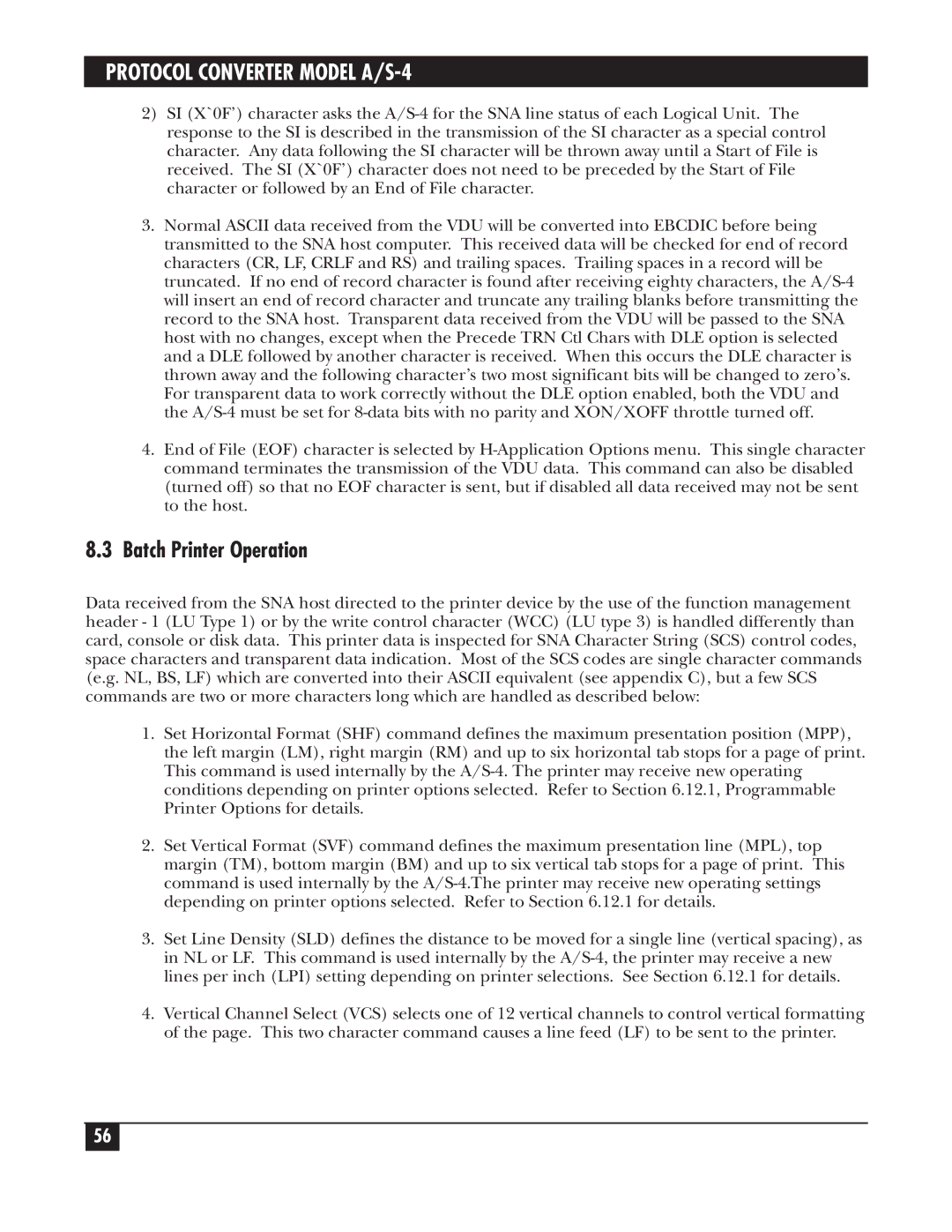
PROTOCOL CONVERTER MODEL A/S-4
2)SI (X`0F’) character asks the
3.Normal ASCII data received from the VDU will be converted into EBCDIC before being transmitted to the SNA host computer. This received data will be checked for end of record characters (CR, LF, CRLF and RS) and trailing spaces. Trailing spaces in a record will be truncated. If no end of record character is found after receiving eighty characters, the
4.End of File (EOF) character is selected by
8.3Batch Printer Operation
Data received from the SNA host directed to the printer device by the use of the function management header - 1 (LU Type 1) or by the write control character (WCC) (LU type 3) is handled differently than card, console or disk data. This printer data is inspected for SNA Character String (SCS) control codes, space characters and transparent data indication. Most of the SCS codes are single character commands (e.g. NL, BS, LF) which are converted into their ASCII equivalent (see appendix C), but a few SCS commands are two or more characters long which are handled as described below:
1.Set Horizontal Format (SHF) command defines the maximum presentation position (MPP), the left margin (LM), right margin (RM) and up to six horizontal tab stops for a page of print. This command is used internally by the
2.Set Vertical Format (SVF) command defines the maximum presentation line (MPL), top margin (TM), bottom margin (BM) and up to six vertical tab stops for a page of print. This command is used internally by the
3.Set Line Density (SLD) defines the distance to be moved for a single line (vertical spacing), as in NL or LF. This command is used internally by the
4.Vertical Channel Select (VCS) selects one of 12 vertical channels to control vertical formatting of the page. This two character command causes a line feed (LF) to be sent to the printer.
56
